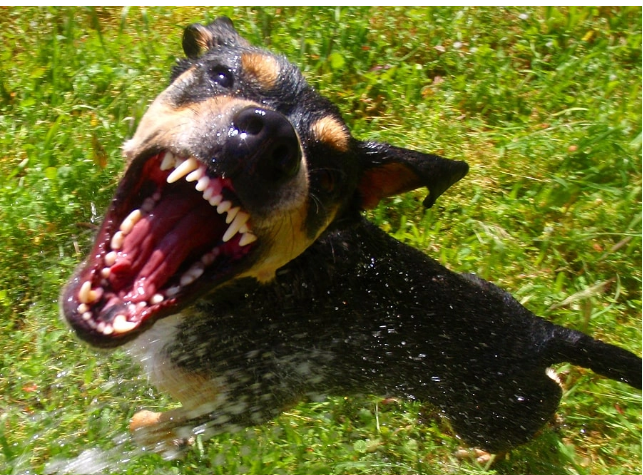Our dog bite lawyer in San Antonio, Texas, can get you the compensation you deserve after your accident. You pay no fees until we win.
Hear from Our Satisfied Clients
Areas in Greater San Antonio We Serve
Relevant Dog Bite Laws in San Antonio
Texas is one of 14 states that uses a one-bite law, which does not apply liability to the dog owner indiscriminately. The one-bite rule states that the dog owner is liable only if they knew, or should have known, that the animal had the potential to be dangerous or vicious from past actions and should have prevented the attack. While no statute lays out this rule, common law negligence covers it, based on a ruling in 1974, in Marshall v. Ranne.
This rule essentially provides the dog with one free pass, where the owner is not responsible because the dog wasn’t known to potentially bite someone. Only once there is a history of biting established (or the dog is classified as dangerous) is the owner responsible for future injuries.
If you want to recover compensation by claiming injuries under the one-bite rule with a dog bite lawyer in San Antonio, you must prove:
1. That the dog bit someone before or displayed aggressive behavior towards someone in the past.
- Even though it’s called the “one-bite” rule, any act of aggression, even if not biting, counts.
- Sometimes, a dog doesn’t need to have necessarily attacked someone for the owner to have reasonable knowledge of the dog’s violent capabilities. For example, if the owner trains the animal as a guard dog, they should know about the dog’s propensity to attack and are therefore liable for injuries.
- Another way owners should know is if they own a specific breed of dog known to be vicious, such as pit bulls.
2. That the owner was aware of the dog’s prior vicious behavior.
- This is why you must report dog bites. Having documented history is sufficient to show the owner is aware.

Criteria for Dangerous Dogs
San Antonio’s dangerous and aggressive dog laws are taken directly from Texas’ Health and Safety Code.
The law defines a dangerous dog as one that:
- Makes an unprovoked attack on a person that causes bodily injury and occurs in a place other than an enclosure in which the dog was being kept and that was reasonably certain to prevent the dog from leaving the enclosure on its own; or
- Commits unprovoked acts in a place other than an enclosure in which the dog was being kept and that was reasonably certain to prevent the dog from leaving the enclosure on its own and those acts cause a person to reasonably believe that the dog will attack and cause bodily injury to that person.
Limited Time to Make a Claim
San Antonio’s statute of limitations (the amount of time you have to file a claim or lawsuit) is two years from the date of the dog attack. If you don’t file your claim within these two years, it’s likely your San Antonio dog bite lawyer won’t be able to get compensation for you.
What Options Do You Have After a Dog Bite in San Antonio?
The one-bite rule makes the legal options steeper in Texas, but a San Antonio dog bite lawyer can explain options that might work if you can’t prove a dog owner knew their dog could attack someone.
Filing a Negligence Claim after a Dog Bite
You can try to prove negligence to hold a dog owner accountable for your injury. Negligence is a core concept in dog bite claims, and Texas law generally defines the concept as a failure to act reasonably.
To support a negligence claim, you will need to prove:
- Duty. You must prove that the negligent party had a duty of care. In general, everyone has a legal obligation to act reasonably, so they don’t harm other people. An example of this may be that a dog owner must supervise the dog around young children. For dog bites, this step will also include proving the defendant owned or cared for the dog.
- Breach. You must show that the offending party breached that duty. Perhaps the dog owner left the dog alone in a room with a baby.
- Actual harm. You must show that real injuries were sustained, which can be proven by photos or medical reports from a doctor.
- Causation. You must show that the breach of duty causes the injuries. This is where fault comes into play. Did the owner’s breach of duty cause the injury, did something unforeseeable happen, or did you contribute in some way to cause the dog to attack? This analysis is where a San Antonio dog bite lawyer’s expertise can help demonstrate that the owner’s breach did cause the injury.
There are a few different types of negligence your lawyer may want to pursue in a dog bite case:
Negligence Per Se
Negligence per se applies to circumstances when a person violates a law, and the violation causes an injury that the law intends to prevent. For example, if a dog injured you while the owner was violating an animal control law, such as:
- Leash laws.
- Dog trespass laws.
- No “free-run” laws.
Landowner Liability
In Texas, you have the option to sue a dog owner’s landowner in some circumstances. Suppose the landowner was aware, or should have been aware, that a dog living on their property could be dangerous to others. In that case, the landowner must remove the animal from the premises. If the landowner did not do so, either through animal control or evicting the dog owner, the landowner is liable as well. One caveat is that the bite must have occurred on the land owned by the landowner.
Criminal Liability
Besides civil liability cases, a dog owner can also face criminal charges based on Texas Health and Safety Code Section 822.005.
This code states that you can bring criminal charges if either of these situations causes death or serious bodily injuries:
(1) with criminal negligence, as defined by Section 6.03, Penal Code, fails to secure the dog and the dog makes an unprovoked attack on another person that occurs at a location other than the owner’s real property or in or on the owner’s motor vehicle or boat and that causes serious bodily injury, as defined by Section 1.07, Penal Code, or death to the other person; or
(2) knows the dog is a dangerous dog by learning in a manner described by Section 822.042(g) that the person is the owner of a dangerous dog, and the dangerous dog makes an unprovoked attack on another person that occurs at a location other than a secure enclosure in which the dog is restrained in accordance with Subchapter D and that causes serious bodily injury, as defined by Section 822.001, or death to the other person.
Locations We Serve
Our Texas accident attorney has successfully recovered maximum compensation for injured individuals and their families all over the state, from the Rio Grande Valley to the Permian Basin.






